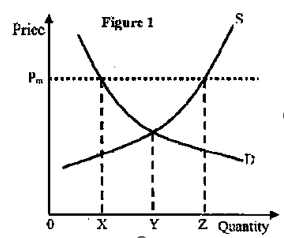A Level Economics Quiz 2015 Part 1
15 QuestionsQuiz Description
Economics as a whole is a social science subject concerned chiefly with description and analysis of the production and distribution of goods and services. This subject also deals with the studies of how individuals, governments and nations make decisions about how to allocate resources.
In this quiz, we shall examine questions that are based on the following topics: “market economy, factors affecting population, demand and supply and so on”
In order to help out with your studies in economics, we have selected 15 questions from the June session of 2015. These questions will give you a general view of how the exam questions are set and how one can reason out to answer the questions. These questions are based on the CGCE Advanced level Economics. Each question has four options and only one is correct among these options. In addition to these quizzes, there are other quizzes available which are also based on past CGCE past questions.
Good Luck
When economic principles are developed from factual evidence, this method of economic reasoning is called
Question 2 is based on the table below, showing the production possibility situation of a country
If this economy chooses the combination of goods at point A,

Which of the following will likely trigger a move from a command economy to a market economy?
A security whose market price is the same as its nominal value is said to be
If the quantity of all factors used in a production process increased by 10% and production rose by 15% there are
Providence and Son’s enterprise has a capital structure composed of:
Debentures - 40 million FCFA
Preferences shares - 80 million FCFA
If the company is lowly geared, the figure for
its ordinary share capital might be
If an industry remains in an area long after the factors that attracted it have disappeared, this is known as
Total population = 100 million people
Birth rate = 5 per thousand
National growth rate = 2 per thousand
The number of deaths in this population is:
Total population = 100 million people
Birth rate = 5 per thousand
National growth rate = 2 per thousand
An ageing population will result in
Total population = 100 million people
Birth rate = 5 per thousand
National growth rate = 2 per thousand
Under which of the following circumstances would an increase in the price of good X result in a fall in the demand for good Y?
If the government of a country fixes a guaranteed minimum price of Pm the effect would be that

A given industry supplies 3,000 units of a good per month at a price of 40 FCFA per unit. If the price elasticity of supply is 4, how many units will this firm supply if the price rises to 50 FCFA?
Given a market demand curve Q=120-2P and supply curve Q=4 P, where P represents price, the equilibrium quantity and price are


